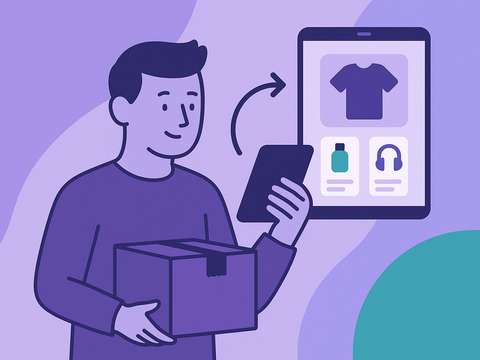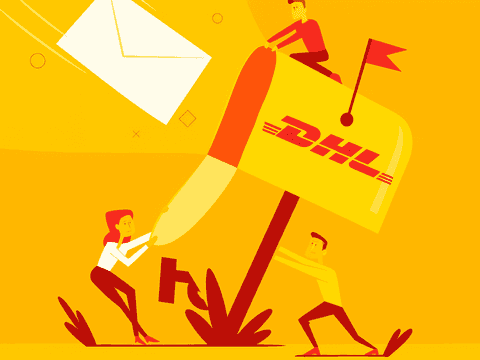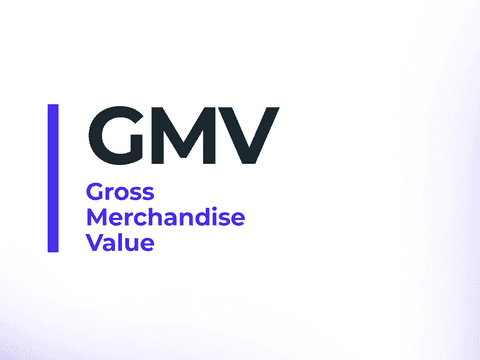Key takeaways extracted directly from reddit
- Why are RMAs used? They help businesses handle returns for defective, damaged, or unwanted products, ensuring smooth reverse logistics.
- Customer experience matters. Keeping buyers informed about their RMA status builds trust and improves the shopping experience.
- Automating the RMA process is crucial. It improves efficiency by reducing manual work and speeding up return processing.
Every online business deals with returns, but not everyone understands how to manage them efficiently. This is where RMA (Return Merchandise Authorization) comes in.
If you're new to RMA systems, don’t worry! This guide will explain everything you need to know about the RMA process flow and how to optimize it for better efficiency and customer satisfaction.

What does RMA mean and what is it used for?
RMA (Return Merchandise Authorization) is a structured system designed to streamline product returns and improve reverse logistics.
When a customer requests a return, they receive an RMA number, which allows businesses to track the RMA process flow from start to finish. This ensures that every returned product is properly documented, processed efficiently, and updated in the inventory system.
RMA systems keep stores in the loop by collecting all the details about a return request. They can automatically update customers with return instructions or alert the warehouse to get ready for incoming items, making the whole process smoother and faster.
Typically, an RMA return follow0s one of three resolutions:
- Refund – The customer returns the item and receives a full or partial refund.
- Replacement – The returned item is exchanged for a new one through an RMA replacement request.
- Repair – The item undergoes servicing and is sent back to the customer as part of the repairprocess.
A smooth return process makes customers feel confident buying from you, knowing they won’t struggle if they need to send something back.
Plus, having a structured system helps you spot fraud and prevent policy abuse.
How does RMA work in shipping?
In shipping, RMAs help you manage product exchanges efficiently.
If a customer wants to exchange an item, the RMA process ensures the original product is returned, and the replacement is sent without confusion.
What is an RMA number or ID?
An RMA number (Return Merchandise Authorization number) is a unique code assigned to each return request, helping businesses track returned products from start to finish. The format varies by system, but most IDs are between 8 and 15 characters long.
How to find an RMA number?
Through customer service or an online return portal. Once issued, the return merchandise authorization number must be linked to inventory management, shipping carriers (UPS, Fedex, DHL, etc) and order management systems. This synchronization prevents mix-ups, ensures fast RMA processing, and keeps the returns workflow efficient.
How to affect inventory management?
Poorly managed RMA returns can disrupt inventory levels, causing inaccurate stock counts and delays in restocking. A well-structured process flow ensures that returned merchandise is either restocked, repaired, or properly disposed of, maintaining accurate inventory tracking.
Tracking return trends also helps businesses detect recurring product defects, improving quality control and demand forecasting. Automating RMA processing with professional returns management software helps streamline operations, reduce manual errors, and enhance reverse logistics.
Why is it important? Financial implications
Handling e-commerce RMA efficiently is more important than ever.
- According to Statista, U.S. online return rates have climbed steadily, reaching 16.5% in 2022 (Statista). With return rates increasing, a well-optimized RMA system ensures that businesses can handle high volumes of returns without compromising customer satisfaction or profitability.
- Inefficient Return Merchandise Authorization (RMA) management can lead to substantial financial losses for retailers. In 2024, fraudulent returns and claims resulted in a $103 billion loss for retailers, with 15.14% of all returns deemed fraudulent.
- Additionally, excessive return costs, including shipping and repackaging, can consume a significant portion of a retailer’s annual revenue. A well-managed RMA system mitigates these risks by reducing fraud, improving inventory accuracy, and minimizing unnecessary return costs.
Who pays for the RMA management?
The cost of RMA processing depends on the company’s return policy and the reason for the return.
When a product is defective or a shipping error occurs, businesses typically cover the return shipping costs as part of their RMA service policy. For returns due to buyer’s remorse, preference changes, or non-defective items, customers are usually responsible for shipping fees.
Some effective practices for managing RMA costs include:
- Offering free return shipping for your most loyal customers enhances their shopping experience and encourages repeat business.
- Analyzing your inventory to identify items with high return rates allows you to adjust pricing slightly to offset potential return costs
How does it work? The RMA process explained
To maximize efficiency, businesses should follow a standardized RMA process:
- RMA customer request – Customers initiate a return by submitting a request through an online form or contacting customer support. The request should include the order number, reason for return, and product details to facilitate quick processing.
- Approval and RMA number issuance – The business reviews the request to ensure it meets return policy criteria. If approved, an RMA number is issued along with detailed return instructions.
- Packaging and labeling – The customer must properly package the item to prevent damage during transit. The RMA number should be clearly marked on the package to ensure smooth processing upon arrival.
- Shipping the returned item – The customer ships the package following the store’s return shipping policy. Depending on the business model, the customer may be responsible for return shipping costs, or a prepaid shipping label may be provided.
- Inspection and processing – Upon receiving the returned product, the business inspects it to confirm its condition and validity of the return reason. Any discrepancies can result in rejection or partial refunds.
- Final Resolution – Based on the inspection outcome, the business issues a refund, replacement, or repair. The resolution is communicated to the customer, ensuring transparency and efficiency.

Strategies, use cases and best practices for RMA management
To optimize RMA handling, businesses should implement the following best practices:
Set smart return policies for different customers
Not all customers should have the same return conditions. Offer free return shipping or longer return windows to your most loyal customers while keeping stricter policies for one-time buyers. This way, you reward repeat shoppers without increasing your RMA return costs unnecessarily.
Use data to predict and reduce returns
If you’re not analyzing return data, you’re missing a huge opportunity. Predictive analytics help you spot patterns, from defective products to high return rates on certain SKUs. With these insights, you can adjust pricing, product descriptions, or quality control measures to lower your return volume before it becomes a problem.
Refurbish and resell returned products
Not all returns are losses. Many RMA products can be repaired, repackaged, and sold as certified refurbished items at a lower price. This reduces waste, cuts down on refund costs, and gives budget-conscious customers a great deal.
Help customers make better buying decisions
Many returns happen because people buy the wrong product. Adding detailed product descriptions, interactive size guides, and instructional videos helps shoppers make the right choice the first time and reduce your product returns. Fewer mistakes mean fewer returns and a smoother RMA process for you.
Inspect and sort returns efficiently
A clear RMA inspection process helps you decide whether returned items should be restocked, refurbished, or discarded. This prevents inventory mismatches and helps keep your stock levels accurate.
Use personalized product recommendations in the exchange workflow
Turning a return into a new sale is all about smart recommendations. If a customer wants to send something back, why not suggest a better alternative?
A well-designed RMA system as Outvio can recommend upgrades, similar products, or even exclusive discounts at the right moment. This not only helps recover lost revenue but also keeps customers engaged and increases the chances they’ll find something they love instead of leaving empty-handed.
Implement RMA system in your e-Commerce business
Your approach to RMA management will depend on the scale of your operations.
Smaller businesses may rely on a manual RMA procedure, assigning RMA numbers for returns and managing requests via email or phone—simple, direct, and budget-friendly.
However, as RMA return volume grows, manual handling becomes inefficient. Larger businesses typically require automated RMA solutions that integrate with inventory tracking, reverse logistics software, and return authorization systems to reduce processing time, prevent fraudulent returns, and improve overall RMA workflow efficiency.
Regardless of your business size, implementing a structured RMA process flow helps streamline return management, cut costs, and enhance customer satisfaction—turning a common pain point into a scalable return solution that supports business growth.




